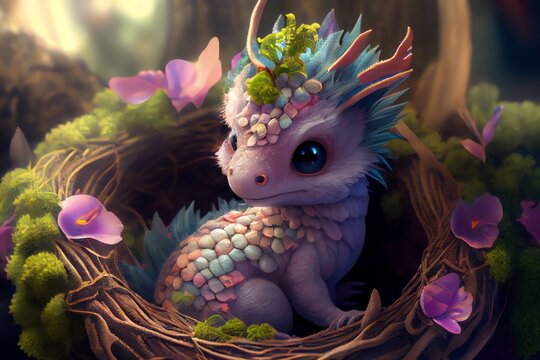
Baby Dragon: A Formidable Force in Standard American English
Introduction
In the realm of Standard American English, the term "baby dragon" evokes images of mythical creatures with immense power and potential. These enigmatic beings, often depicted as hatchlings or young dragons, possess a unique set of abilities and characteristics that distinguish them from their adult counterparts. Their diminutive size and youthful nature may belie their true strength, making them formidable adversaries in any linguistic encounter.
Etymology and Origins
The term "baby dragon" is a compound noun derived from the words "baby" and "dragon." The word "baby" refers to a young child or animal, while "dragon" originates from the Greek word "drakōn," meaning "serpent" or "monster." In mythology and folklore, dragons are often depicted as large, winged, fire-breathing creatures with scales and claws. The combination of these two terms creates a vivid image of a young dragon, possessing both the innocence of a child and the inherent power of its species.
Linguistic Characteristics
Baby dragons in Standard American English exhibit several distinct linguistic characteristics that set them apart from other types of dragons. These characteristics include:
- Diminutive Form: Baby dragons are typically referred to using diminutive forms, such as "baby dragon," "hatchling," or "young dragon." These forms convey the creature’s small size and youthful nature.
- Adjectives: Baby dragons are often described using adjectives that emphasize their cuteness, playfulness, or innocence. Common adjectives include "adorable," "fluffy," "curious," and "mischievous."
- Verbs: Baby dragons are frequently depicted as engaging in playful or mischievous activities. Verbs such as "frolic," "romp," and "prance" are often used to describe their movements.
- Figurative Language: Baby dragons are often used as metaphors or similes to convey a sense of wonder, excitement, or danger. For example, a person who is particularly energetic or playful may be described as having "the energy of a baby dragon."
Cultural Significance
Baby dragons hold significant cultural significance in various societies around the world. In Chinese mythology, for instance, the baby dragon is known as a "long," and it is often depicted as a symbol of good luck and prosperity. In Western cultures, baby dragons are frequently featured in fantasy literature and film, where they represent both the potential for greatness and the dangers of unchecked power.
Literary Depictions
Baby dragons have been featured in numerous works of literature, both classic and contemporary. Some notable examples include:
- The Hobbit by J.R.R. Tolkien: Smaug, the dragon who terrorizes the dwarves of Erebor, is depicted as a young dragon in his early years.
- The Chronicles of Narnia by C.S. Lewis: Eustace Scrubb encounters a baby dragon named Eustace Clarence Scrubb in the book "The Voyage of the Dawn Treader."
- Harry Potter and the Goblet of Fire by J.K. Rowling: Harry Potter encounters a baby dragon named Norbert during the Triwizard Tournament.
Figurative Usage
Beyond their literal meaning, baby dragons are also used figuratively in Standard American English to convey a variety of ideas and emotions. These figurative uses include:
- Potential: Baby dragons can symbolize the potential for greatness or achievement. For example, a promising young athlete may be described as having "the potential of a baby dragon."
- Danger: Baby dragons can also represent the dangers of unchecked power or ambition. For example, a person who is overly ambitious or reckless may be compared to a "baby dragon playing with fire."
- Curiosity: Baby dragons are often depicted as being curious and inquisitive. This characteristic can be used to convey a sense of wonder or excitement about something new or unknown.
- Playfulness: Baby dragons are frequently associated with playfulness and mischief. This characteristic can be used to add a touch of humor or lightheartedness to a situation.
Conclusion
Baby dragons in Standard American English are more than just mythical creatures. They are linguistic constructs that embody a unique set of characteristics and cultural significance. Their diminutive size and youthful nature belie their true strength and potential, making them formidable adversaries in any linguistic encounter. Whether used literally or figuratively, baby dragons continue to captivate and inspire imaginations, reminding us of the power of potential, the dangers of unchecked ambition, and the enduring appeal of the unknown.
